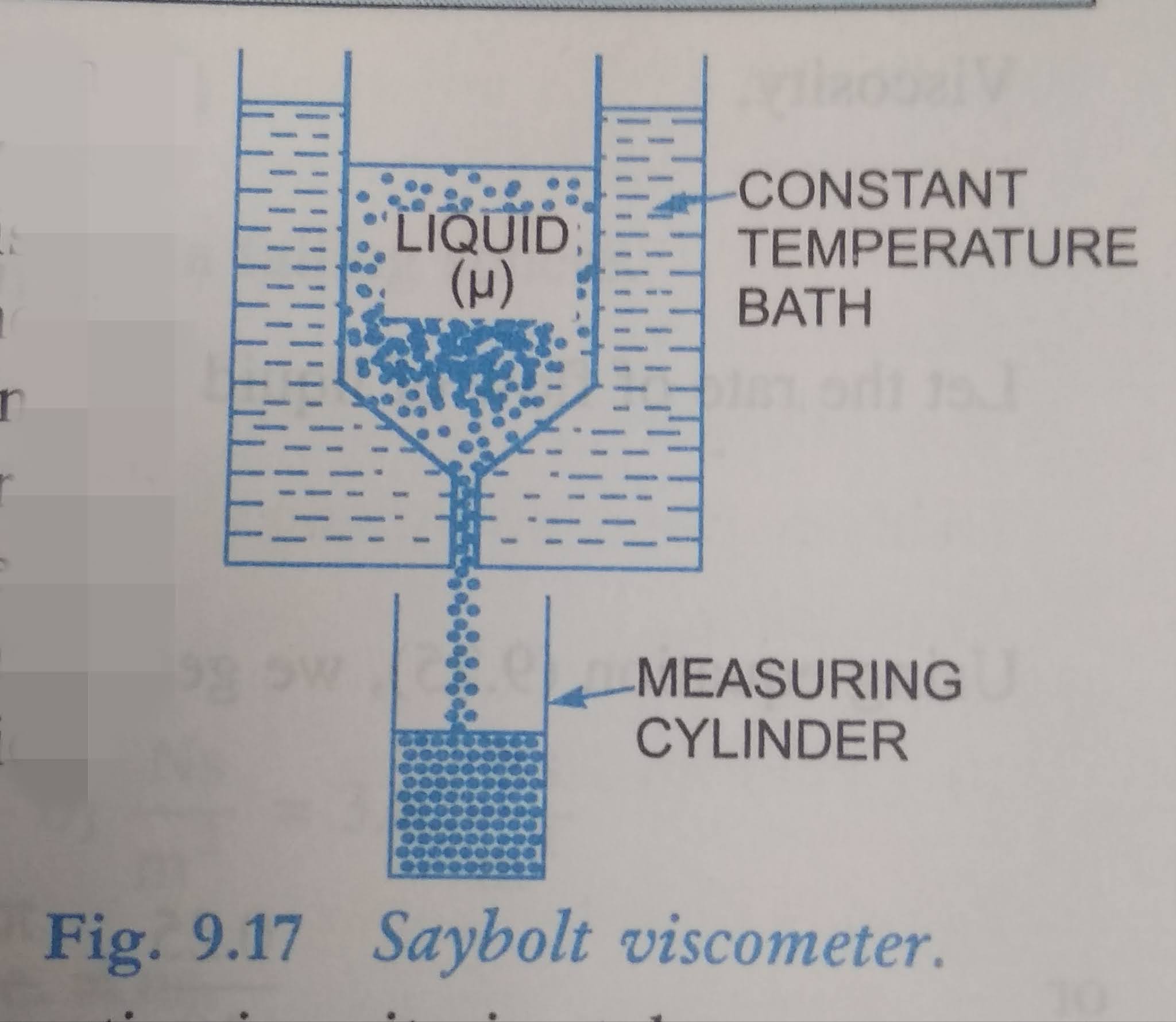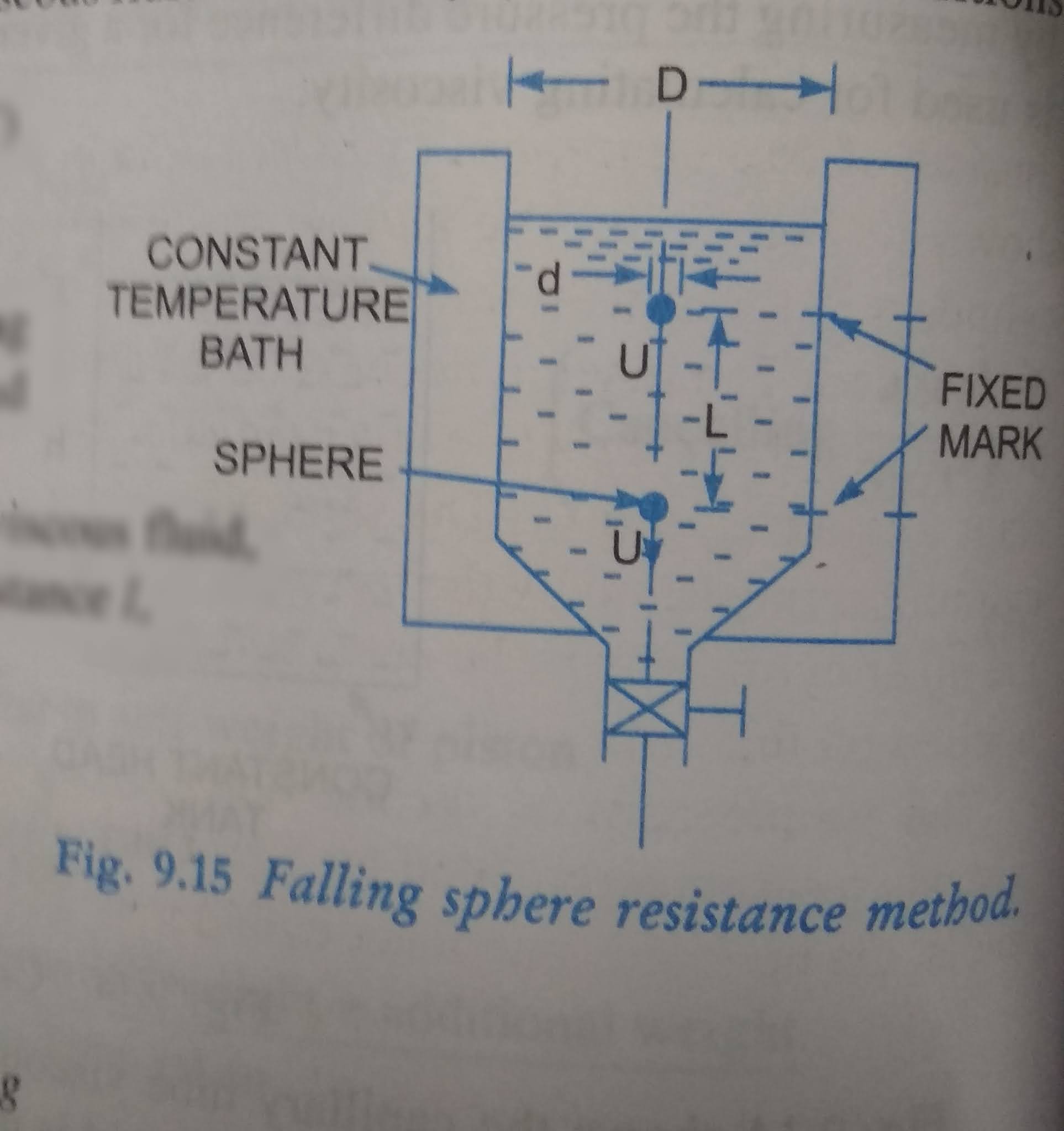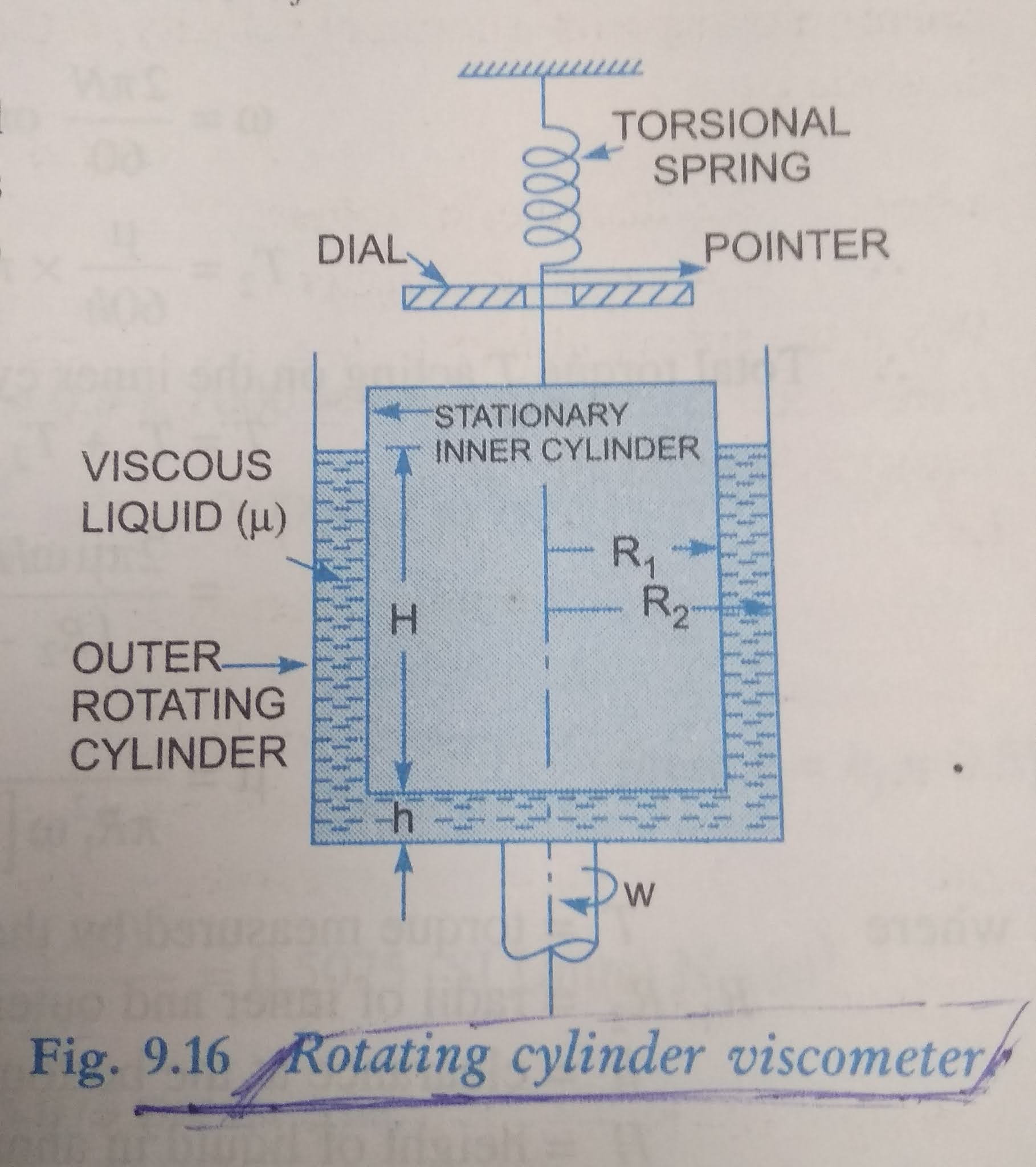In study of Fluid Mechanics the viscosity is one of the major properties of fluid which is taken in consideration while analysing fluid motion.
Viscosity- is an fluid property which tends to oppose or resist the motion of one layer of fluid over another layer. Viscosity in fluids is analogous to friction in solids.
The first basic formula for it was given by Newton and the Law is known as Newton's law of viscosity. It tells that Shear Stress between adjacent fluid layers is directly proportional to the rate of change of velocity. τ = μ*(du/dy) where τ= Shear Stress; μ=Coefficient of Viscosity(dynamic) ; (du/dy)=rate of change of velocity.
Methods to determine Coefficient of Viscosity
the following are the experimental methods to calculate coefficient of Viscosity
1. Capillary tube Method
2. Falling sphere Method (basic one, can be applied easily)
3. Rotating Cylinder Method
4. Orifice type Viscometer
Capillary tube Method
In this method viscosity is calculated by measuring the pressure difference for a given length of capillary tube. The Hagen Poiseuille law is used for calculating viscosity
using Hagen Poiseuille formula
h=(32μvL) / (ρgD^2)
here mean velocity v = discharge(Q)/area =Q/(π/4*D^2)
hence μ=πρg*D^4/(128*Q*L)
Falling sphere Method
this method is based on stokes law which states that the drag force F on a sphere moving with constant velocity V through a viscous fluid of viscosity μ is given by
F = 3πμVd (drag force)
the forces acting on sphere are
1. its weight W = ρ(sphere) * volume* g= ρ(sphere) *(π/6 *d^3)*g
2. buoyant force F(b)= ρ(fluid) *(π/6 *d^3)*g
3. drag force F=3πμVd
for equilibrium drag force= weight of sphere - buoyant force
F = W - F(b)
⇒ 3πμVd = ρ(sphere) *(π/6 *d^3)*g - ρ(fluid) *(π/6 *d^3)*g
⇒ μ = g*d^2 [ρ(sphere) - ρ(fluid )] ➗ (18*V)
besides all the mentioned methods this one is really easy and feasible in real life at home in my opinion. You can perform this experiment with household materials and no need of extra machinery. you need a transparent jar or mug ,a small spherical body like a marble, stop watch, weighing machine.
Rotating Cylinder Method
This method consists of two concentric cylinders of radii R1 and R2 . The narrow space between the two cylinders is filled with the liquid whose viscosity is to be e determined. The inner cylinder is held stationary by means of a torsional spring while outer cylinder is rotated at constant angular speed omega. The torque T acting on the inner cylinder is measured by the the torsional spring. The torque on the inner cylinder must be equal and opposite to the torque applied on the outer cylinder.
The torque applied on the outer cylinder is due to viscous resistance provided by liquid in the annular space and at the bottom of the inner cylinder.
μ = 2(R2-R1)hT ➗(π*R1^2*ω[4HhR2+R1^2*(R2-R1) ] )
where
T= torque measured by strain of torsional spring
h= clearance at the bottom of cylinders
H= height of liquid in annular space
μ= co-efficient of viscosity to be determined
Orifice type Viscometer
The time taken by a certain quantity of the liquid whose viscosity is to be determined, to flow through a short capillary tube is noted down. The coefficient of viscosity is then obtained by comparing with the coefficient of viscosity of a liquid whose viscosity is known or by the use of conversion factors. Viscometers such as saybolt redwood or engler are usually used. The principle for all the three viscometer is same. In the United Kingdom red wood viscometer is used while in USA saybolt viscometer is commonly used.

In the picture above , saybolt viscometer which consists of a tank at the bottom of which a short capillary tube is fitted. In this time the liquid whose viscosity is to be determined is filled. This tank is surrounded by another tank, called constant temperature bath. The liquid is allowed to flow through a capillary tube at a standard temperature. The time taken by 60cc of the liquid to flow through the capillary tube is noted down. The initial height of liquid in the tank is previously adjusted to a standard height. From the time measurement,the Kinematics viscosity of liquid is known from the relation
υ= A*t - B/t
where υ= kinematics viscosity
A= 0.24 , B=190
t = time in seconds
Thanks for reading till now
stay tuned :P






Hello Farooq, Thanks for sharing the informative article. Can I have you email I want to discuss a project with you.
ReplyDelete